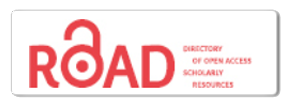THE ROLE OF BUREAUCRATIC REFORM IN ENHANCING PUBLIC SERVICE QUALITY: EVIDENCE FROM EAST JAVA
DOI:
https://doi.org/10.70248/jogapa.v2i3.2407Keywords:
Bureaucratic Reform, Public Service, Good Governance, Digitalization, SPBE AccountabilityAbstract
Bureaucratic reform is a critical strategy to improve the quality of public services by promoting transparent, efficient, and accountable governsance. This study aims to analyze the role of bureaucratic reform in enhancing public service delivery, focusing on the implementation of good governance principles, digitalization, and the development of bureaucratic capacity. Using a qualitative descriptive approach, data were collected through literature review, policy analysis, and in-depth interviews with relevant stakeholders. The findings indicate that the bureaucratic reform efforts in East Java Province have led to a significant increase in the Bureaucratic Reform Index, the strengthening of Electronic-Based Government Systems (SPBE), and a measurable impact on service quality and poverty alleviation. The digital transformation of public services has enabled more accessible, faster, and transparent service delivery to citizens. Nevertheless, challenges such as bureaucratic resistance, limited digital infrastructure, and inadequate human resource competencies remain. Therefore, a stronger commitment and continuous innovation are required to build a professional, adaptive, and citizen-oriented public bureaucracy.
References
Arief, A. (2021). Kajian Literatur ( Systematic Literature Review ): Kendala Penerapan Sistem Pemerintahan Berbasis Elektronik ( SPBE ). 8(1), 1–6.
Christensen, T., & L_egreid, P. (2007). Transcending New Public Management: The Transformation of Public Sector Reforms. Ashgate Publishing, Ltd.
Creswell, J. W., & Creswell, j david. (2018). reserarch design :Qualitative, Quantitative, and Mixed Methods Approaches. In Writing Center Talk over Time (Fifth Edit). SAGE Publications, Inc. https://doi.org/10.4324/9780429469237-3
Dunn, W. N. (2017). Public Policy Analysis An Integrated Approach. In Sustainability (Switzerland) (6th editio, Vol. 11, Issue 1). Routledge. http://scioteca.caf.com/bitstream/handle/123456789/1091/RED2017-Eng-8ene.pdf?sequence=12&isAllowed=y%0Ahttp://dx.doi.org/10.1016/j.regsciurbeco.2008.06.005%0Ahttps://www.researchgate.net/publication/305320484_SISTEM_PEMBETUNGAN_TERPUSAT_STRATEGI_MELESTARI
Hadi, M., & Riyanto, A. (2023). Evaluating E-Government Implementation in Indonesia: Infrastructure and Literacy Challenges. Indonesian Journal of Public Administration, 11(1), 45–59.
Hartono, A., & Dewi, L. (2023). Inclusive Service Delivery through Bureaucratic Reform: A Case Study of Digital Equity in Indonesia. Asian Journal of Public Administration, 18(1), 45–60.
Hood, C. (1991). A Public Management for All Seasons? Public Administration. Chicago Review, 69(1), 19. https://doi.org/10.2307/25305228
KemenPAN-RB. (2025). Surat Deputi Bidang Reformasi Birokrasi, Akuntabilitas Aparatur, dan Pengawasan Nomor B/43/RB.04/2025 tentang Hasil Evaluasi Reformasi Birokrasi Tahun 2024.
Layne, K., & Lee, J. (2001). Developing fully functional E-government: A four stage model. Government Information Quarterly, 18(2), 122–136. https://doi.org/https://doi.org/10.1016/S0740-624X(01)00066-1
Moleong, L. J. (2007). Metodologi penelitian kualitatif edisi revisi. remaja rosdakarya.
Nugroho, H., & Permata, L. (2023). Digital Bureaucracy and Service Quality in Local Government: Evidence from Indonesian Provinces. Journal of Public Administration and Policy Studies, 15(1), 25–38.
Osborne, D. T. (1992). Reinventing Government (Government That Means Business). Leadership Abstracts, 1–3.
Putri, S. M., Anwar, Y., & Lestari, D. (2022). Barriers to Digital Transformation in Local Governance: A Case Study in East Java. Jurnal Administrasi Publik, 10(2), 120–132.
Rachmawati, I., Nugroho, R., & Santoso, B. (2023). Sustainability of Bureaucratic Reform: Institutional Coordination and Policy Monitoring in Indonesian Local Governments. Journal of Governance and Policy Review, 15(3), 77–91.
Romzek, B. S., & Dubnick, M. J. (1987). Accountability in the Public Sector: Lessons from the Challenger Tragedy. Public Administration Review, 47(3), 227–238. http://www.jstor.org/stable/975901
Sugiyono, S. (2018). Metode Penelitian Pendidikan Pendekatan Kualitatif, Kuantitatif dan R & D. In Alfabeta. Alfabeta.
Sunarya, A. (2018). Reformasi Birokrasi Administrasi Pelayanan Pajak Kendaraan Bermotor Berbasis Mobile Technology (1st ed.). zifatma jawara. www.unitomo.ac.id
United Nation Development Programme. (1997). Governance for Suistainable Human Development. United Nations Development Programme, 1–39. https://digitallibrary.un.org/record/492551?v=pdf
Weber, M. (1947). The Theory of Social and Economic Organization. In free press (Vol. 4). https://doi.org/10.12681/sas.741
Wicaksono, B., & Rahayu, F. (2022). Digital Challenges in Bureaucratic Reform: Evidence from Regional Governments in Indonesia. Journal of Government and Public Policy, 12(2), 101–115.
Zed, M. (2004). Metode Penelitian Kepustakaan (1st ed.).



















